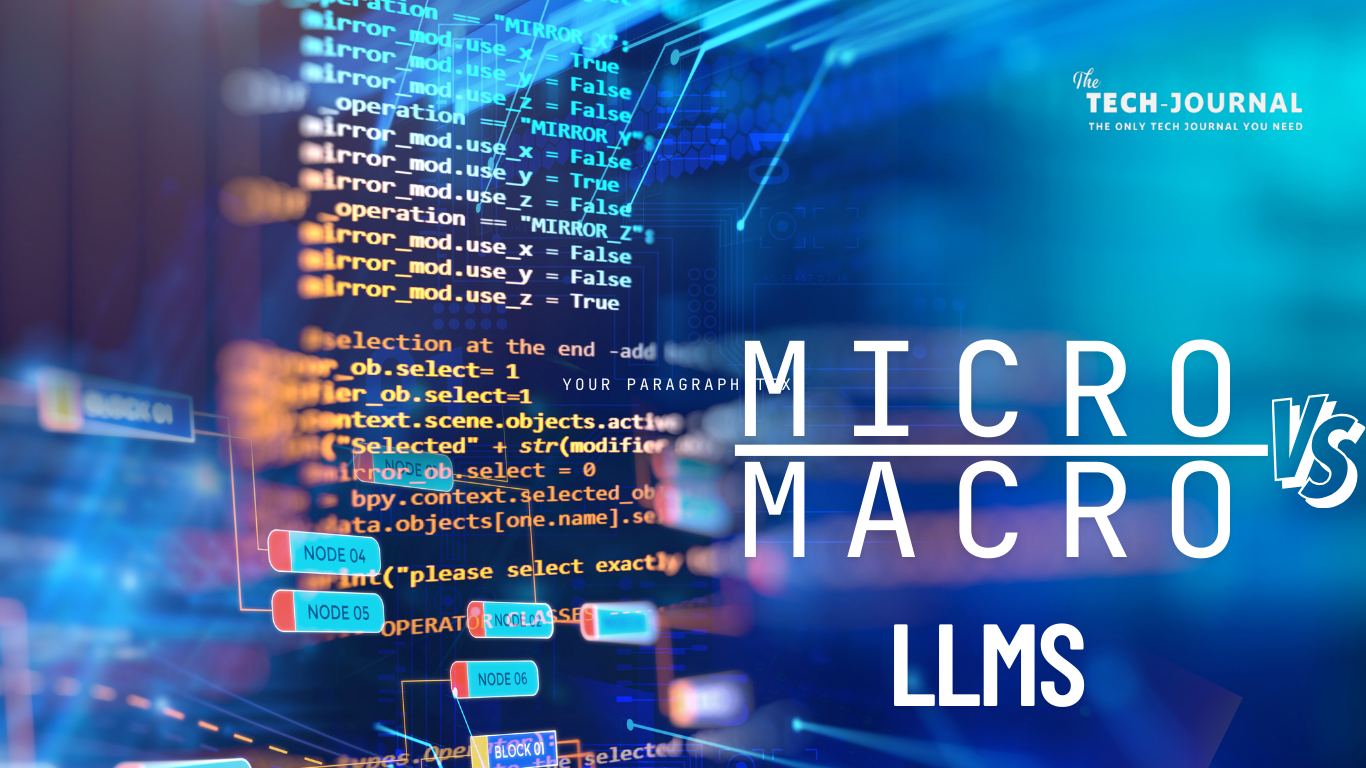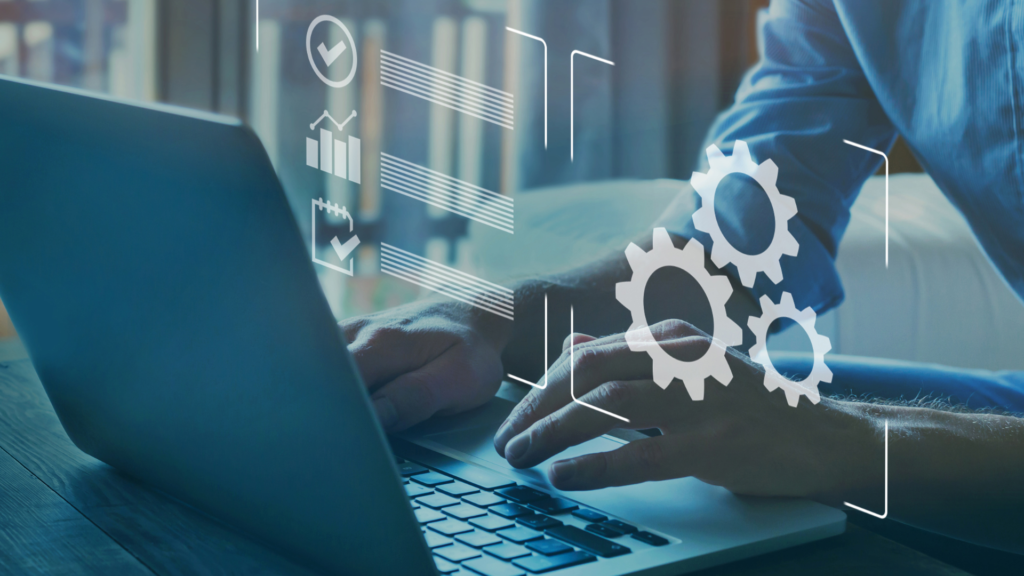Large Language Models (LLMs) are at the forefront of the rapid progress of artificial intelligence. From generating human-like language to writing code, designing marketing campaigns, and even simulating conversations, LLMs are quickly becoming vital tools in a variety of businesses.
However, as the technology advances, a new distinction is emerging: micro LLMs vs. macro LLMs. One offers speed, efficiency, and privacy. The other provides tremendous intelligence, scalability, and computational power. So, which one represents the future?
Let us break it down.
What Are LLMs?
Large language models are artificial intelligence systems educated on massive volumes of text data to understand, generate, and interact with human language. This artificial intelligence family includes models such as GPT-4, PaLM, Claude, and LLaMA. These models use deep learning (specifically transformer architectures) to detect patterns, meaning, and context in natural language.
The main categories of LLMs are,
Macro LLMs are massive models having billions (or trillions) of parameters.
Micro LLMs are smaller, more efficient models optimized for specialized workloads or edge-device performance.
Macro LLMs:
Macro LLMs (Large Language Models) are large AI models that have been trained on immense datasets, frequently with billions or trillions of parameters. These models are often run in cloud environments and require a significant amount of computing power to function.
They’re named “macro” because of their enormity—both in terms of model size and the intricacy of jobs they can handle.
Macro LLMs are well-known for their potency. Consider OpenAI’s GPT-4, DeepMind’s Gemini, and Meta’s LLaMA 3.
Macro models dominate due to their vast knowledge base, creative abilities, and multimodal capabilities, which enable them to generate context-rich responses across various topics, including images, audio, and video. But they excel in complex reasoning, enterprise-level tasks, research, coding, legal and scientific writing, and human-like conversation at scale.
Micro LLMs:
Micro LLMs are small, streamlined versions of their larger counterparts. While they do not have the raw brainpower of macro models, they are intended for speed, efficiency, and specialized activities.
Micro LLMs are low-power, high-speed, privacy-focused, and cost-effective, allowing applications to run on smartphones, laptops, and IoT devices without cloud computing.
TinyLlama, DistilBERT, and quantized LLaMA 2 7B are examples of micro LLMs. Microsoft’s Phi-2 and LoRA-tuned Mistral-7B are also micro LLMs.
Micro vs. Macro:
Instead of indicating a rivalry, the growth of micro and macro LLMs indicates a healthy environment. Both have distinct strengths, and combined, they can shape the future of intelligent, responsive technology.
Macro LLMs are analogous to the cloud brain—massive, powerful, capable of sophisticated reasoning and universal knowledge.
Micro LLMs are local smart agents that are fast, context-aware, and suited to your specific needs.
| Feature | Micro LLMs | Macro LLMs |
|---|---|---|
| Model Size | Small (millions to <1B parameters) | Massive (billions to trillions of parameters) |
| Deployment | On-device or edge systems | Cloud-based or server infrastructure |
| Speed | Ultra-fast, real-time responses | Slower due to cloud latency |
| Cost | Low training & deployment cost | High compute and infrastructure cost |
| Power Consumption | Low, runs on mobile/laptops | High, needs GPUs and large data centers |
| Data Privacy | Data stays on device (secure) | Data may be sent to cloud |
| Task Focus | Narrow, task-specific intelligence | Broad, general-purpose intelligence |
| Use Cases | Smart assistants, wearables, IoT devices | Coding, research, content creation, support |
| Multimodal Support | Limited or none | Often supports text, image, audio, and more |
| Examples | Apple’s on-device LLM, Phi-2, Gemma | GPT-4, Claude 3, Gemini 1.5, LLaMA 3 |
| Customization | Easy to fine-tune for niche use cases | Harder to fine-tune, needs large resources |
| Offline Capability | Yes (runs without internet) | No (needs cloud access) |
Summary,
Micro LLMs are small, fast, and private, ideal for personal tasks, while macro LLMs are powerful, scalable, and ideal for enterprise-level thinking and creation.
Use Cases of Micro LLMs
Smartphones & Personal Assistants:
Use Case: Voice commands, smart replies, predictive typing
Apple’s iPhone utilizes micro LLMs in Siri for local, fast, and private processing of voice commands, smart replies, and predictive typing.
Wearable Devices:
Use Case: Health tracking, voice prompts, real-time feedback
Smartwatches analyze workouts, offer suggestions, and process data on-device, saving battery life and protecting sensitive data privacy.
Educational Tools:
Use Case: On-device tutoring, quiz generation, flashcard creation
Apps that assist children in learning math or language concepts locally without internet access are crucial due to their reliability even in low-connectivity areas.
Use Cases of Macro LLMs
Enterprise Automation:
Use Case: Automating customer support, HR queries, and internal documentation
A company utilizes GPT-4 for handling support tickets, generating reports, and writing job descriptions, thereby saving hours of manual work and enhancing consistency.
Content Creation:
Use Case: Blog writing, video script generation, social media planning
Marketing teams utilize Claude 3 or Gemini 1.5 to generate SEO-optimized articles, enhancing ideation speed and facilitating the creation of high-quality content.
Healthcare & Research:
Use Case: Analyzing patient data, summarizing medical research, assisting in diagnostics
A doctor employs a macro LLM to summarize journal findings or generate discharge notes, thereby saving time, reducing burnout, and improving precision.
| Domain | Micro LLMs (On-device) | Macro LLMs (Cloud-based) |
|---|---|---|
| Phones/Assistants | Smart replies, offline commands | Conversational AI bots, complex task management |
| Healthcare | On-device symptom tracking | AI medical assistants, report summarization |
| Education | Flashcards, offline learning apps | Adaptive tutoring, content creation |
| IoT & Edge | Smart appliances, industrial sensors | Global monitoring and big data analysis |
| Business Ops | Local note-taking apps, calendar help | Customer support automation, document generation |
| Security & Privacy | Data stays on device, better user control | Advanced threat detection, global risk assessments |
Final Thoughts: Intelligence Is Getting Smarter—and Smaller
AI is evolving. We now have both power and portability.
Micro LLMs offer intelligent features for personal devices. They are fast, private, and efficient. They perform focused tasks accurately.
Elsewhere, macro LLMs are reshaping the landscape of enterprise, research, and creativity. These large-scale models act as general-purpose brains in the cloud, solving complex problems, writing code, generating content, and supporting industries at a global scale.
AI’s future is a blend of technologies. Picture this: tiny AI helpers on your phone for personal stuff, backed up by super-smart cloud AI.
What if your phone was a ChatGPT, even without internet? Or an AI so smart it could write a paper, plan a business, and fix code, all super fast.
Welcome to the world of micro vs. macro LLMs—intelligence is about more than just size! It’s smarter, faster, and creeping up on us.



